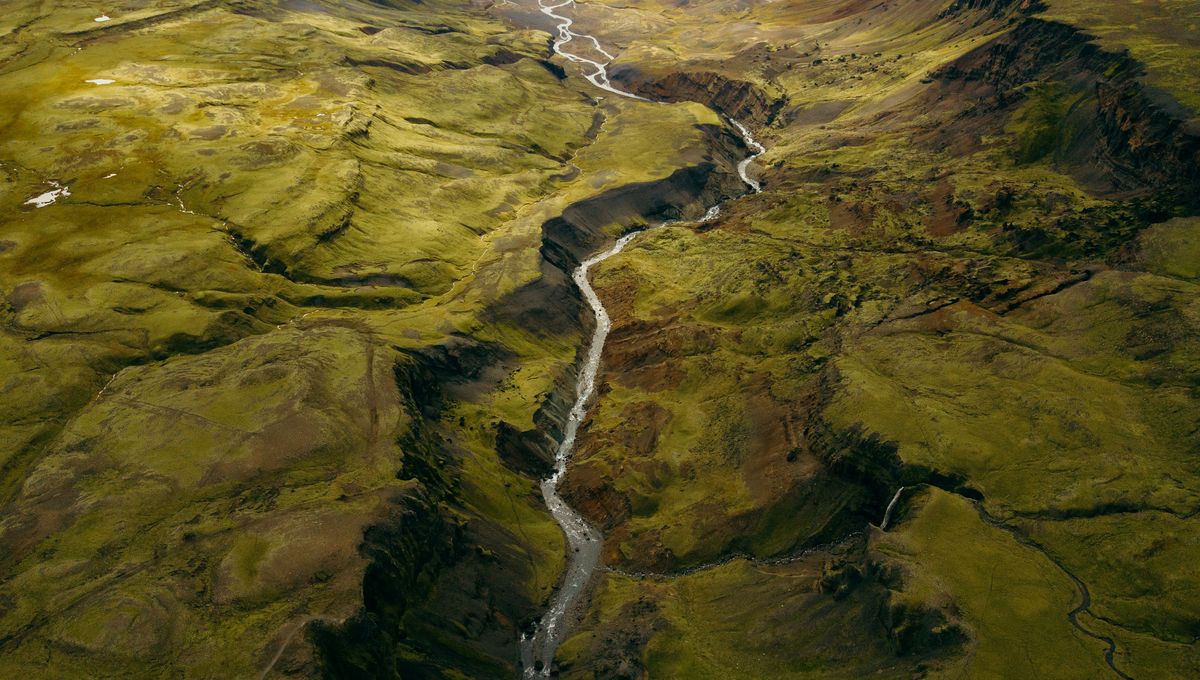
Rivers start in mountains, join other streams as they flow downhill, then channel into an open ocean or lake. Right? Well, not always. In a new study, scientists have reviewed nine rivers and lakes in the Americas that appear at first to break away from the conventional rules of hydrology.
These include the Casiquiare River (Venezuela), Arroyo Partido (Argentina), Wayambo River (Suriname), Atchafalaya River (the US), North Two Ocean Creek (the US), Divide Creek (Canada), Committee’s Punch Bowl (Canada), Echimamish River (Canada), and Wollaston Lake (Canada).
They all possess river bifurcations, which occur when a river splits into two or more channels that may flow into different drainage basins. Unlike typical bifurcations, these nine examples do not return to the main waterway after branching off. To achieve this, the rivers will quite often flow in two directions.
The Echimamish River – meaning “water that flows both ways” in the Indigenous language Cree – in the Canadian wilderness is arguably one of the strangest examples of this. The researchers describe this river bifurcation as “one of the most obscure, the most baffling, and the most unique to investigate.”
This bizarre river serves as a natural link between the Hayes River and the Nelson River in Canada, creating a rare example of river bifurcation. Its slow, meandering flow is influenced by the region’s flat terrain and numerous beaver dams, making it difficult to determine the exact points where the water divides. Historical accounts suggest that the river may flow outward from its center in both directions, adding to the ongoing uncertainty about its true course.
Another weird example is South America’s Casiquiare River, a navigable waterway that connects the Orinoco and Amazon Basins by acting as a distributary of the former and a tributary of the latter. The study authors explain this river as the “hydrologic equivalent of a wormhole between two galaxies.”
The Casiquiare unexpectedly branches off from the Orinoco River, winding through the flat rainforest before merging with the Rio Negro and eventually feeding into the Amazon. What makes it so fascinating is that this massive waterway flows down an extremely shallow slope — less than 0.009 percent gradient — yet still carries a significant volume of water. Scientists believe this strange behavior is the result of an incomplete river capture, where one river slowly diverts the flow of another, although researchers are still unraveling the secrets of this unique river system.
There is also the Wayambo River in Suriname that can flow either east or west, depending on how much rainfall has entered the water.
The study focused on natural river bifurcations and rivers that flow throughout the year, but it’s worth mentioning another weird example: Isa Lake in Yellowstone National Park, the only lake in the world known to drain into both the Atlantic and Pacific Oceans.
The small lake sits directly on the Continental Divide of North America, a crest of mountains runs vertically down through the continent and divides the major watersheds flowing to different oceans. This unique location allows the east side of Isa Lake to drain into the Lewis River, a tributary of the Columbia River, and eventually into the Pacific Ocean. Meanwhile, the west side of the lake drains into the Firehole River, a tributary of the Madison River, and ultimately to the Gulf of Mexico, which is linked to the Atlantic by the Straits of Florida.
However, the study does focus on North Two Ocean Creek in Wyoming, another water system on the Continental Divide that has a very gentle flow, allowing fish to swim from the Pacific to the Atlantic watershed. This means it is often described as a stream that connects the Atlantic and Pacific Oceans.
Overall, the researchers conclude that while these rivers share certain characteristics that challenge conventional hydrology, they remain very diverse and different from one another.
“Some exemplify water bodies in formation; others exemplify water bodies caught in sensitive topography; others exemplify water bodies whose flow direction is determined by wildlife. Some water bodies are streams small enough to step over and others are lakes over 100 km long. Some are remote and wild; others are highly developed and controlled,” the study authors write in their conclusion.
“Each is unique in its own way,” they add. “Together, these hydrologic oddities illustrate how much we have still to learn about Earth’s dynamic surface.”
The new study is published in the journal Water Resources Research.
Source Link: Scientists Spot Rivers That Are "Hydrologic Equivalent Of A Wormhole Between Two Galaxies"